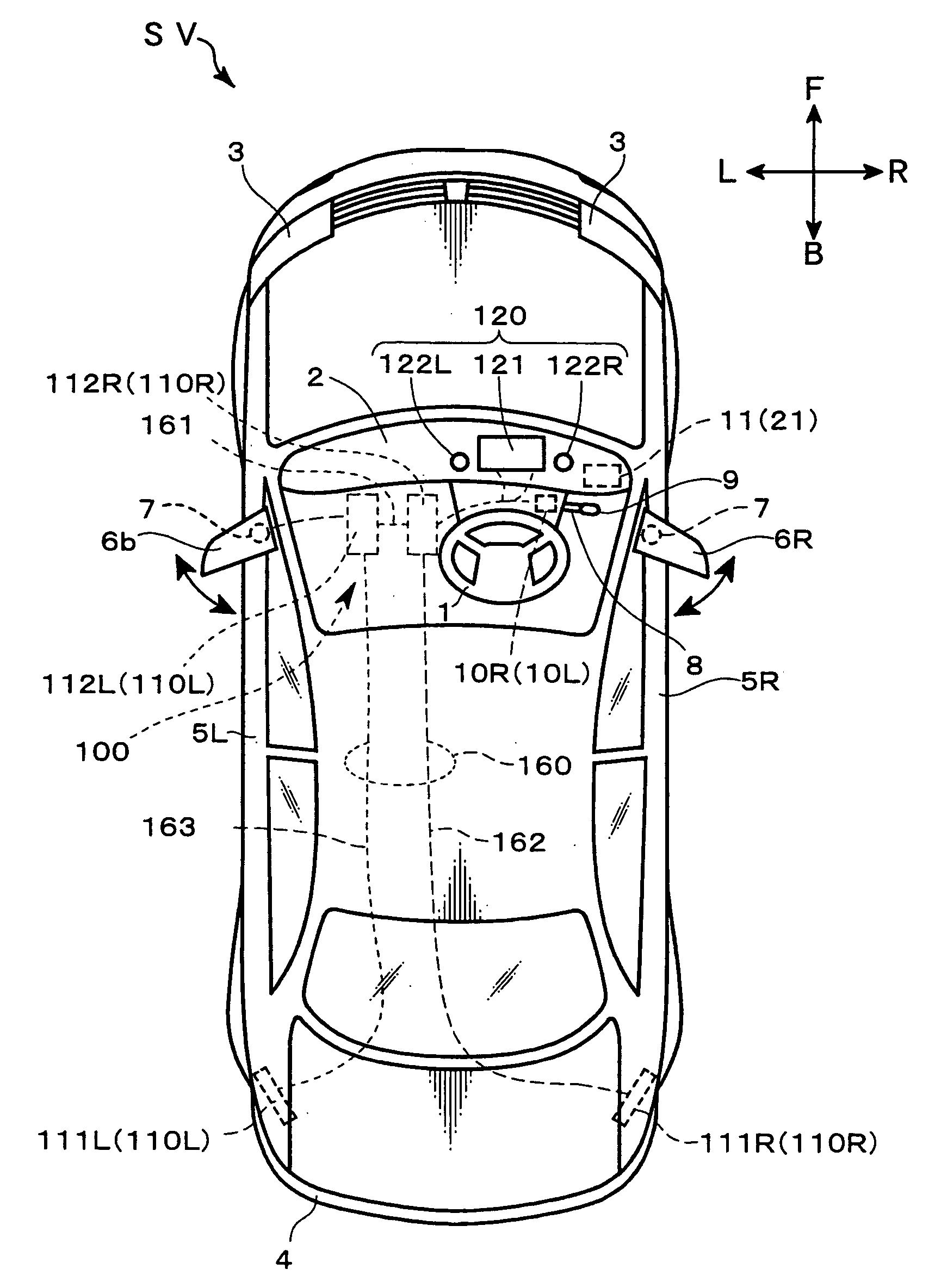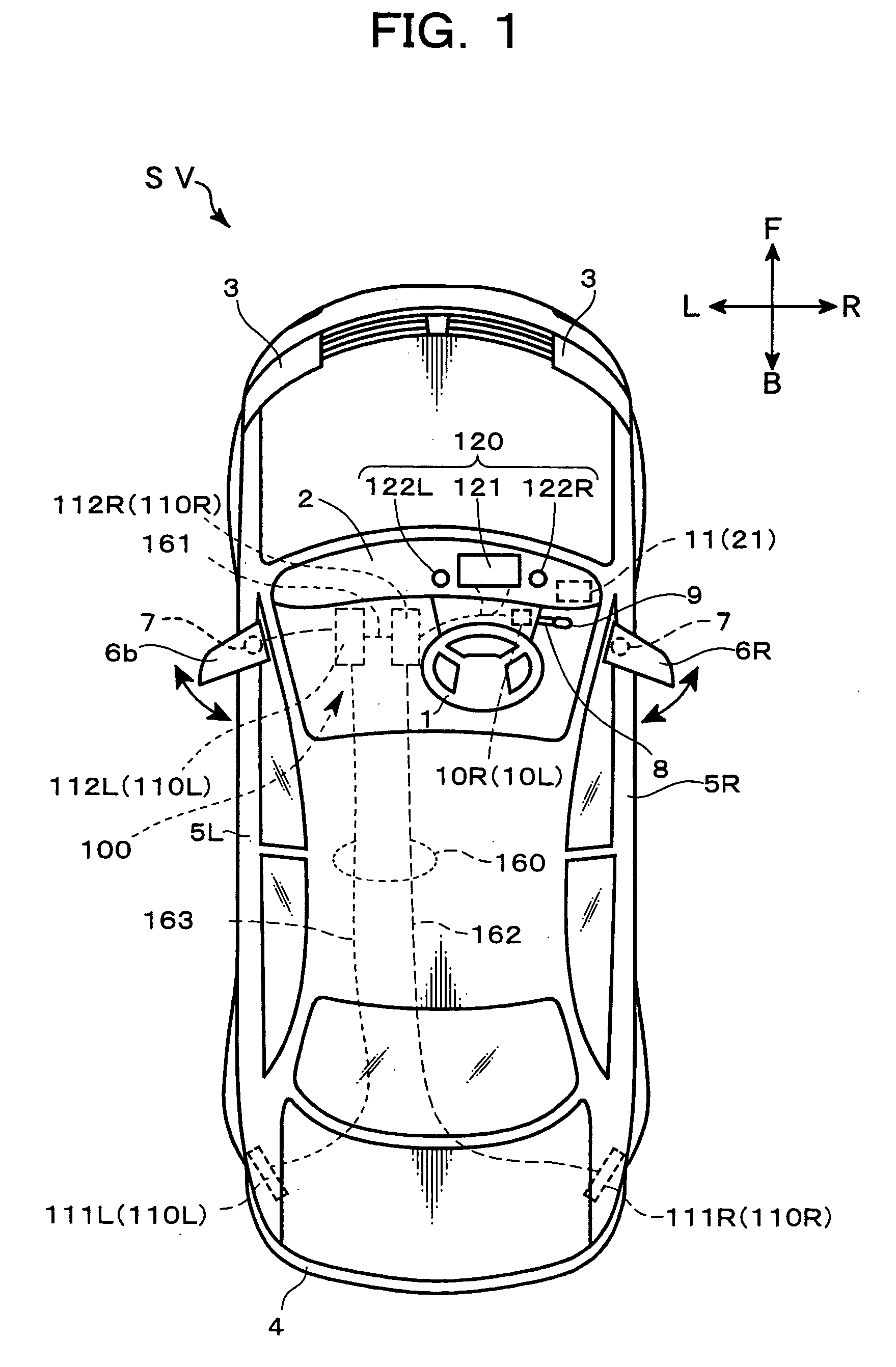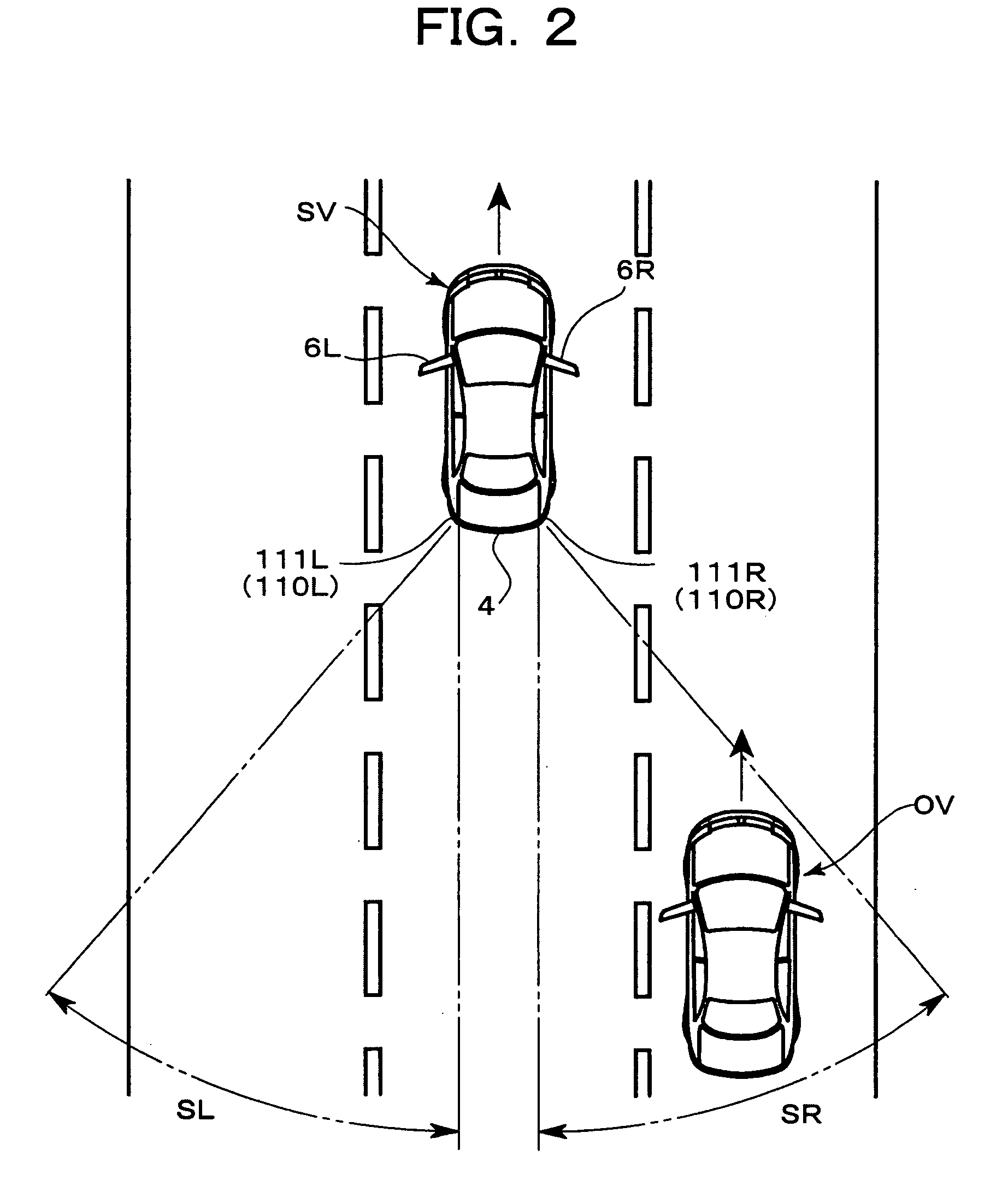Blind-spot detection system for vehicle
a blind spot detection and vehicle technology, applied in traffic control systems, transportation and packaging, instruments, etc., can solve the problems of inability to detect the occurrence of a failure in the obstacle indicator, the difficulty of the driver to check simultaneously the display and the failure warning unit, and the inability of the driver to reliably ensur
- Summary
- Abstract
- Description
- Claims
- Application Information
AI Technical Summary
Benefits of technology
Problems solved by technology
Method used
Image
Examples
first embodiment
[0078] With a view to embodying the above BSD system 100, a pair of left and right side mirrors or door mirrors 6 arranged in a symmetric manner are employed in a first embodiment of the present invention. Therefore, the subscripts “L” and “R” indicating “left” and “right” will be omitted in the following description.
[0079] Referring to FIGS. 7 and 8, the door mirror 6 is a unit body which is provided with a frame 61 disposed on the body of the vehicle SV, a mirror glass 62 mounted on the frame 6, a heater 63 disposed on the side of a back surface of the mirror glass 62 and housed in the frame 61, and a cover 64 fixing the mirror glass 62 and the heater 63 to the frame 61.
[0080] The frame 61 is a supporting structure for the mirror glass 62 and the heater 63, and formed with an engagement portion 66 engageable with the door-mirror drive unit 7. Through this engagement portion 66, the door mirror 6 as a unit body is driven by the door-mirror drive unit 7 in such a manner as to be m...
second embodiment
[0121] As shown in FIG. 15, in a BSD system according to a second embodiment of the present invention, when it is determined that the left and right door mirrors 6 are not in the deployed position, based on an output of the door-mirror deploying switch 22 (“NO” in Step S504), the door mirror control element 1129 controls the door mirror drive unit 7 to move the door mirrors 6 to the deploy position, in Step S505. Preferably, in Step 505 illustrated in FIG. 15, the movements of the left and right door mirrors 6 to the deploy position are controllably initiated after confirming safe conditions that no obstacle exists around the vehicle SV, using a corner sensor mounted on the vehicle SV.
[0122] In the second embodiment, the door mirrors 6 are automatically deployed when the ignition switch 21 is turned ON, provided that the rearward obstacle alert system is demanded to be activated. Thus, regardless the operation of the main switch 101 of the BSD modules 110, it can be checked whether...
third embodiment
[0123] As shown in FIG. 16, in a BSD system according to a third embodiment of the present invention, a given condition (timing condition) is set to the warning based on warning means in the failure indication subroutine S5. In this embodiment, the failure-warning determination element 1126 controls the in-cabin warning LED 122 to indicate a warning when an elapsed time T1 after initiation of the ON state of the ignition switch 21 falls within a given time Tc1. Further, the failure-warning determination element 1126 controls the in-mirror warning LED 142 to indicate a warning when the main switch 101 turns ON and before a given time elapses after the vehicle speed becomes equal to or greater than 10 km / h.
[0124] When the failure flag F is set at “n” through the operation in Step S4, the failure-warning determination element 1126 determines whether or not the elapsed time T1 after initiation of the ON state of the ignition switch 21 is equal to or less than the given time Tc1 (Step S...
PUM
 Login to View More
Login to View More Abstract
Description
Claims
Application Information
 Login to View More
Login to View More - R&D
- Intellectual Property
- Life Sciences
- Materials
- Tech Scout
- Unparalleled Data Quality
- Higher Quality Content
- 60% Fewer Hallucinations
Browse by: Latest US Patents, China's latest patents, Technical Efficacy Thesaurus, Application Domain, Technology Topic, Popular Technical Reports.
© 2025 PatSnap. All rights reserved.Legal|Privacy policy|Modern Slavery Act Transparency Statement|Sitemap|About US| Contact US: help@patsnap.com



